 |
 |
 |
 |
 |
 |
| |
 |
|
 |
 |
 |
  |
  |
 |
 |
 |
 |
| 2009 PRITZKER ARCHITECTURE PRIZE | PETER ZUMTHOR
|
|
Citation from the Jury
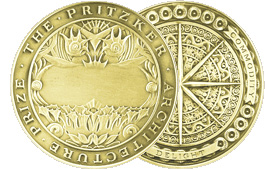 Peter Zumthor is a master architect admired by his colleagues around the world for work that is focused, uncompromising and exceptionally determined. He has conceived his method of practice almost as carefully as each of his projects. For 30 years, he has been based in the remote village of Haldenstein in the Swiss mountains, removed from the flurry of activity of the international architectural scene. There, together with a small team, he develops buildings of great integrity –untouched by fad or fashion. Declining a majority of the commissions that come his way, he only accepts a project if he feels a deep affinity for its program, and from the moment of commitment, his devotion is complete, overseeing the project’s realization to the very last detail. Peter Zumthor is a master architect admired by his colleagues around the world for work that is focused, uncompromising and exceptionally determined. He has conceived his method of practice almost as carefully as each of his projects. For 30 years, he has been based in the remote village of Haldenstein in the Swiss mountains, removed from the flurry of activity of the international architectural scene. There, together with a small team, he develops buildings of great integrity –untouched by fad or fashion. Declining a majority of the commissions that come his way, he only accepts a project if he feels a deep affinity for its program, and from the moment of commitment, his devotion is complete, overseeing the project’s realization to the very last detail.
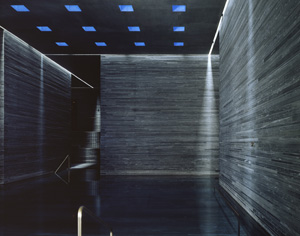 His buildings have a commanding presence, yet they prove the power of judicious intervention, showing us again and again that modesty in approach and boldness in overall result are not mutually exclusive. Humility resides alongside strength. While some have called his architecture quiet, his buildings masterfully assert their presence, engaging many of our senses, not just our sight but also our senses of touch, hearing and smell. His buildings have a commanding presence, yet they prove the power of judicious intervention, showing us again and again that modesty in approach and boldness in overall result are not mutually exclusive. Humility resides alongside strength. While some have called his architecture quiet, his buildings masterfully assert their presence, engaging many of our senses, not just our sight but also our senses of touch, hearing and smell.
Zumthor has a keen ability to create places that are much more than a single building. His architecture expresses respect for the primacy of the site, the legacy of a local culture and the invaluable lessons of architectural history. The Kolumba Museum in Cologne, for example, is not only a startling contemporary work but also one that is completely at ease with its many layers of history. Here, Zumthor has produced a building that emerges from the remains of a bombed church in the most inevitable and lyrical of ways, intertwining place and memory in an entirely new palimpsest. This has always been the compelling character of this architect’s work, from the singular yet universal breath of faith inscribed in the tiny field chapel in the village of Wachendorf, Germany, to the mineral mist in the thermal baths at Vals, Switzerland. For him, the role of the architect is not just to construct a fixed object but also to anticipate and choreograph the experience of moving through and around a building.
In Zumthor’s skillful hands, like those of the consummate craftsman, materials from cedar shingles to sandblasted glass are used in a way that celebrates their own unique qualities, all in the service of an architecture of permanence. The same penetrating vision and subtle poetry are evident in his writings as well, which, like his portfolio of buildings, have inspired generations of students. In paring down architecture to its barest yet most sumptuous essentials, he has reaffirmed architecture’s indispensable place in a fragile world. For all of these reasons, Peter Zumthor is the recipient of the 2009 Pritzker Architecture Prize.
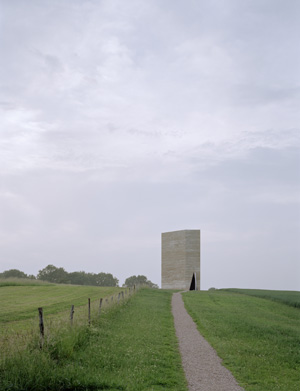 Peter Zumthor of Switzerland has been chosen as the 2009 Laureate of the Pritzker Architecture Prize. The formal ceremony for what has come to be known throughout the world as architecture’s highest honor will be held on May 29 in Buenos Aires, Argentina. At that time, a $100,000 grant and a bronze medallion will be bestowed on the 65-year old architect. Peter Zumthor of Switzerland has been chosen as the 2009 Laureate of the Pritzker Architecture Prize. The formal ceremony for what has come to be known throughout the world as architecture’s highest honor will be held on May 29 in Buenos Aires, Argentina. At that time, a $100,000 grant and a bronze medallion will be bestowed on the 65-year old architect.
Although most of his work is in Switzerland, he has designed projects in Germany, Austria, The Netherlands, England, Spain, Norway, Finland and the United States. His most famous work is in Vals, Switzerland — the Thermal Baths, which has been referred to by the press as “his masterpiece.” Most recently critics have praised his Field Chapel to Saint Nikolaus von der Flüe near Cologne, Germany. The jury singled out not only those buildings, but also the Kolumba Museum in Cologne, calling the latter “a startling contemporary work, but also one that is completely at ease with its many layers of history.”
In announcing the jury’s choice, Thomas J. Pritzker, chairman of The Hyatt Foundation, quoted from the jury citation, “Peter Zumthor is a master architect admired by his colleagues around the world for work that is focused, uncompromising and exceptionally determined.” And he added, “All of Peter Zumthor’s buildings have a strong, timeless presence. He has a rare talent of combining clear and rigorous thought with a truly poetic dimension, resulting in works that never cease to inspire.”
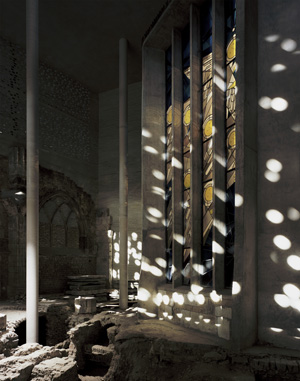 In Zumthor’s own words as expressed in his book, Thinking Architecture, “I believe that architecture today needs to reflect on the tasks and possibilities which are inherently its own. Architecture is not a vehicle or a symbol for things that do not belong to its essence. In a society that celebrates the inessential, architecture can put up a resistance, counteract the waste of forms and meanings, and speak its own language. I believe that the language of architecture is not a question of a specific style. Every building is built for a specific use in a specific place and for a specific society. My buildings try to answer the questions that emerge from these simple facts as precisely and critically as they can.” In Zumthor’s own words as expressed in his book, Thinking Architecture, “I believe that architecture today needs to reflect on the tasks and possibilities which are inherently its own. Architecture is not a vehicle or a symbol for things that do not belong to its essence. In a society that celebrates the inessential, architecture can put up a resistance, counteract the waste of forms and meanings, and speak its own language. I believe that the language of architecture is not a question of a specific style. Every building is built for a specific use in a specific place and for a specific society. My buildings try to answer the questions that emerge from these simple facts as precisely and critically as they can.”
Pritzker Prize jury chairman, The Lord Palumbo elaborated with more of the citation: “Zumthor has a keen ability to create places that are much more than a single building. His architecture expresses respect for the primacy of the site, the legacy of a local culture and the invaluable lessons of architectural history.” He continued, “In Zumthor’s skillful hands , like those of the consummate craftsman, materials from cedar shingles to sandblasted glass are used in a way that celebrates their own unique qualities, all in the service of an architecture of permanence.”
Zumthor, when notified that he had been named the 2009 laureate, responded, “Being awarded the Pritzker Prize is a wonderful recognition of the architectural work we have done in the last 20 years. That a body of work as small as ours is recognized in the professional world makes us feel proud and should give much hope to young professionals that if they strive for quality in their work it might become visible without any special promotion.”
The Zumthor choice marks the second time in three decades of the Pritzker Architecture Prize that Switzerland has provided the laureate. In 2001, Jacques Herzog and Pierre de Meuron were the honorees.
The purpose of the Pritzker Architecture Prize is to honor annually a living architect whose built work demonstrates a combination of those qualities of talent, vision and commitment, which has produced consistent and significant contributions to humanity and the built environment through the art of architecture.
The distinguished jury that selected Zumthor as the 2009 Laureate consists of its chairman, Lord Palumbo, internationally known architectural patron of London, chairman of the trustees, Serpentine Gallery, former chairman of the Arts Council of Great Britain, former chairman of the Tate Gallery Foundation, and former trustee of the Mies van der Rohe Archive at the Museum of Modern Art, New York; and alphabetically: Alejandro Aravena, architect and executive director of Elemental in Santiago, Chile; Shigeru Ban, architect and professor at Keio University, Tokyo, Japan; Rolf Fehlbaum, chairman of the board, Vitra in Basel, Switzerland; Carlos Jimenez, professor, Rice University School of Architecture, principal, Carlos Jimenez Studio in Houston, Texas; Juhani Pallasmaa, architect, professor and author of Helsinki, Finland; Renzo Piano, architect and Pritzker Laureate, of Paris, France and Genoa, Italy; and Karen Stein, writer, editor and architectural consultant in New York. Martha Thorne, associate dean for external relations, IE School of Architecture, Madrid, Spain, is executive director.
“There have been two Pritzker Prize Laureates from South America, but we have never held the ceremony there,” explained Pritzker. “The first was Oscar Niemeyer of Brazil in 1988, and then another Brazilian in 2006, Paulo Mendes da Rocha. We held their ceremonies in Chicago and Istanbul respectively. The venues change every year, moving around the world focusing on historic and architecturally significant sites. We’ve held ceremoies in Asia, Europe and North America, including Mexico, so it is time to visit South America.”
The late Philip Johnson was the first Pritzker Laureate in 1979. The late Luis Barragán of Mexico was named in 1980. The late James Stirling of the United Kingdom was elected in 1981, Kevin Roche in 1982, Ieoh Ming Pei in 1983, and Richard Meier in 1984. Hans Hollein of Austria was the 1985 Laureate. Gottfried Böhm of Germany received the prize in 1986. The late Kenzo Tange was the first Japanese architect to receive the prize in 1987; Fumihiko Maki was the second from Japan in 1993; and Tadao Ando the third in 1995. Robert Venturi received the honor in 1991, and Alvaro Siza of Portugal in 1992. Christian de Portzamparc of France was elected Pritzker Laureate in 1994. The late Gordon Bunshaft of the United States and Oscar Niemeyer of Brazil, were named in 1988. Frank Gehry of the United States was the recipient in 1989, the late Aldo Rossi of Italy in 1990. In 1996, Rafael Moneo of Spain was the Laureate; in 1997 the late Sverre Fehn of Norway; in 1998 Renzo Piano of Italy, in 1999 Sir Norman Foster of the UK, and in 2000, Rem Koolhaas of the Netherlands. In 2001, two architects from Switzerland received the honor: Jacques Herzog and Pierre de Meuron. Australian Glenn Murcutt received the prize in 2002. The late Jørn Utzon of Denmark was honored in 2003; Zaha Hadid of the UK in 2004; and Thom Mayne of the United States in 2005. Paulo Mendes da Rocha of Brazil was the Laureate in 2006, and Richard Rogers received the prize in 2007. Jean Nouvel of France was the Laureate last year.
The field of architecture was chosen by the Pritzker family because of their keen interest in building due to their involvement with developing the Hyatt Hotels around the world; also because architecture was a creative endeavor not included in the Nobel Prizes. The procedures were modeled after the Nobels, with the final selection being made by the international jury with all deliberations and voting in secret. Nominations are continuous from year to year with hundreds of nominees from countries all around the world being considered each year.
The Jury
ChairMan
The Lord Palumbo
Architectural Patron, Chairman of the Trustees, Serpentine Gallery
Former Chairman of the Arts Council of Great Britain
Former Chairman of the Tate Gallery Foundation
Former Trustee of the Mies van der Rohe Archive at the Museum of Modern Art, New York
London, England
Alejandro Aravena
Architect and Executive Director of Elemental
Santiago, Chile
Shigeru Ban
Architect
Professor, Keio University
Tokyo, Japan
Rolf Fehlbaum
Chairman of the Board, Vitra
Basel, Switzerland
Carlos Jimenez
Professor, Rice University School of Architecture
Principal, Carlos Jimenez Studio
Houston, Texas
Juhani Pallasmaa
Architect, Professor and Author
Helsinki, Finland
Renzo Piano
Architect and Pritzker Laureate 1998
Paris, France and Genoa, Italy
Karen Stein
Writer, editor and architectural consultant
New York, New York
Executive Director
Martha Thorne
Associate Dean for External Relations
IE School of Architecture
Madrid, Spain
about Peter Zumthor...
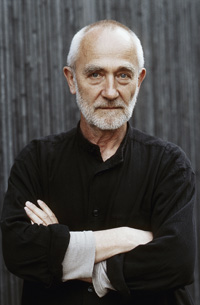 Peter Zumthor was born on April 26, 1943, the son of a cabinet maker, Oscar Zumthor, in Basel, Switzerland. He trained as a cabinet maker from 1958 to 1962. From 1963-67, he studied at the Kunstgewerbeschule, Vorkurs and Fachklasse with further studies in design at Pratt Institute in New York. Peter Zumthor was born on April 26, 1943, the son of a cabinet maker, Oscar Zumthor, in Basel, Switzerland. He trained as a cabinet maker from 1958 to 1962. From 1963-67, he studied at the Kunstgewerbeschule, Vorkurs and Fachklasse with further studies in design at Pratt Institute in New York.
In 1967, he was employed by the Canton of Graubünden (Switzerland) in the Department for the Preservation of Monuments working as a building and planning consultant and architectural analyst of historical villages, in addition to realizing some restorations. He established his own practice in 1979 in Haldenstein, Switzerland where he still works with a small staff of fifteen. Zumthor is married to Annalisa Zumthor-Cuorad. They have three children, all adults, Anna Katharina, Peter Conradin, and Jon Paulin, and two grandchildren.
Since 1996, he has been a professor at the Academy of Architecture, Universitá della Svizzera Italiana, Mendrisio. He has also been a visiting professor at the University of Southern California Institute of Architecture and SCI-ARC in Los Angeles in 1988; at the Technische Universität, Munich in 1989; and at the Graduate School of Design, Harvard University in 1999.
His many awards include the Praemium Imperiale from the Japan Art Association in 2008 as well as the Carlsberg Architecture Prize in Denmark in 1998, and the Mies van der Rohe Award for European Architecture in 1999. In 2006, he received the Thomas Jefferson Foundation Medal in Architecture from the University of Virginia. The American Academy of Arts and Letters bestowed the Arnold W. Brunner Memorial Prize in Architecture in 2008. A complete list of all his awards is provided in the fact summary of this media kit.
In the recent book published by Barrons Educational Series, Inc. titled, Architectura, Elements of Architectural Style, with the distinguished architectural historian from Australia, Professor Miles Lewis, as general editor, the Zumthor’s Thermal Bath building at Vals is described as “a superb example of simple detailing that is used to create highly atmospheric spaces. The design contrasts cool, gray stone walls with the warmth of bronze railings, and light and water are employed to sculpt the spaces. The horizontal joints of the stonework mimic the horizontal lines of the water, and there is a subtle change in the texture of the stone at the waterline. Skylights inserted into narrow slots in the ceiling create a dramatic line of light that accentuates the fluidity of the water. Every detail of the building thus reinforces the importance of the bath on a variety of levels.”
8 In the book titled Thinking Architecture, first published by Birkhauser in 1998, Zumthor set down in his own words a philosophy of architecture. One sample of his thoughts is as follows: “I believe that architecture today needs to reflect on the tasks and possibilities which are inherently its own. Architecture is not a vehicle or a symbol for things that do not belong to its essence. In a society that celebrates the inessential, architecture can put up a resistance, counteract the waste of forms and meanings, and speak its own language. I believe that the language of architecture is not a question of a specific style. Every building is built for a specific use in a specific place and for a specific society. My buildings try to answer the questions that emerge from these simple facts as precisely and critically as they can.”
Credits
Photo of the Therme Vals and Kolumba Museum, © Helene Binet, courtesy by Peter Zumthor
Photo of the Field Chapel to Saint Nikolaus von der Flüe, © Walter Mair, courtesy by Peter Zumthor
Photo of Peter Zumthor, © Gary Ebner, courtesy by Peter Zumthor

Pritzker Prize |
|
 |
  |
 |
|
|